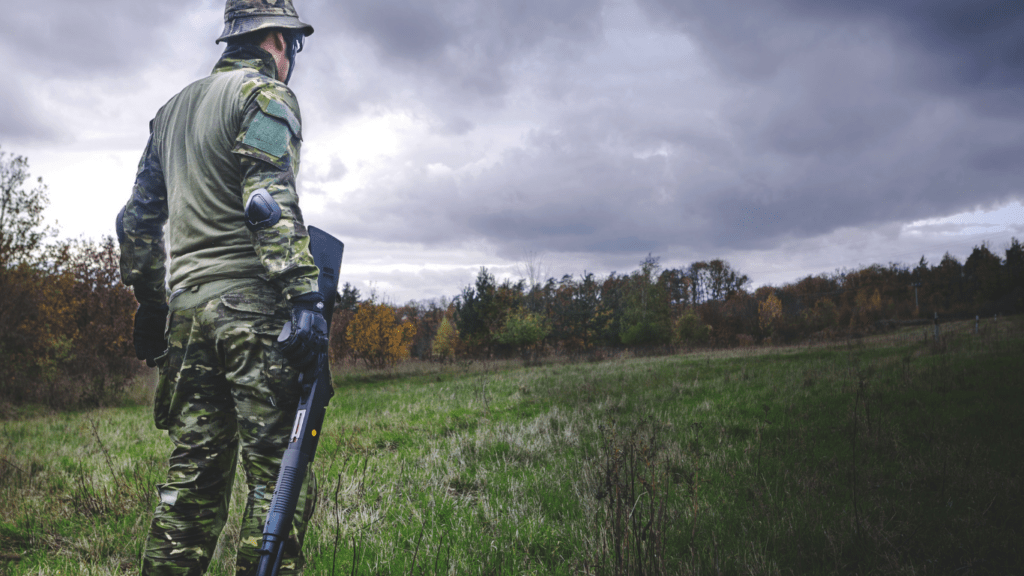Venturing into the wilderness, I’ve come to appreciate the art of tracking and stalking for big game hunting. Mastering these techniques requires patience, skill, and a deep understanding of the natural world. In the heart of the wild, every step, every sound, can make the difference between success and failure.
As I navigate through dense forests and rugged terrain, I’ve honed my senses to pick up the subtle signs left by majestic creatures. From deciphering tracks in the mud to interpreting broken twigs, each clue leads me closer to my elusive target. With a blend of strategy and stealth, I immerse myself in the thrill of the chase, where every moment is a test of wit and agility.
Join me on a journey where we delve into the intricate world of tracking and stalking, unraveling the secrets that connect hunter and prey in a timeless dance of survival and instinct.
Understanding Big Game Behavior
Observing big game behavior is crucial for successful hunting. It’s essential to recognize patterns and habits that these majestic animals exhibit in their natural habitat. Big game, such as deer, elk, or bears, have distinct behaviors that can be exploited by knowledgeable hunters.
Deer, for example, are known for their cautious nature, quick reflexes, and acute senses. Understanding their behavior involves recognizing their feeding grounds, watering holes, and travel routes. By studying deer movements, I can anticipate their paths and position myself strategically for a better chance at a successful hunt.
Elk, on the other hand, are social animals that often travel in herds. Their behavior centers around communication and protection within the group. Being aware of elk herding tendencies allows me to predict their movements and choose the right approach during a hunt.
Bears, with their powerful sense of smell and territorial behavior, require a different strategy. Knowing their habitats, feeding preferences, and seasonal patterns is key to tracking and stalking bears effectively. By understanding bear behavior, I can minimize risks and increase the likelihood of a safe and successful hunt.
Overall, understanding big game behavior provides valuable insights that can make a significant difference in the outcome of a hunt. By combining this knowledge with patience and skill, I can enhance my hunting experience and connect more deeply with the natural world around me.
Essential Tracking Skills
When it comes to big game hunting, having essential tracking skills is paramount. Here are key aspects to focus on for successful tracking and stalking:
Identifying Tracks and Signs
Recognizing tracks and signs left by big game animals is a crucial skill for a hunter. By studying footprints, scat, fur snagged on branches, and other indications, I can determine the type of animal, its size, the direction it’s moving, and how fresh the trail is. This information helps me anticipate the animal’s movements and plan my approach strategically.
Understanding Animal Behavior Patterns
Understanding the behavior patterns of big game animals is vital for a successful hunt. Each species exhibits distinct behaviors that influence their movement and interactions. For instance, deer are known for their cautious nature, while elk tend to be more social. Bears, on the other hand, are territorial creatures. By familiarizing myself with these behavior patterns, I gain valuable insights into the animals’ routines, preferred habitats, and responses to external stimuli. This knowledge allows me to predict their actions more accurately and increase my chances of a successful hunt.
- Stalking Techniques
When it comes to stalking big game, approaching with stealth is crucial. - Approaching Big Game Stealthily
Moving quietly and blending into the surroundings are key elements when stalking big game.
Importance of Patience in Big Game Hunting
Engaging in big game hunting requires a fundamental understanding of the vital role that patience plays in achieving success. When out in the wilderness tracking and stalking prey, patience is not just a virtue but a critical skill that can make or break a hunt. In this challenging pursuit, staying composed and waiting for the perfect moment to strike is paramount.
In the realm of big game hunting, patience manifests as the ability to endure long periods of waiting, often in uncomfortable conditions, without growing restless or making hasty decisions. By maintaining a calm demeanor and a focused mindset, hunters increase their chances of securing their target without alerting or spooking the game.
The significance of patience extends beyond the physical act of waiting; it also encompasses the mental fortitude required to persist through setbacks and unforeseen circumstances. For me, mastering the art of patience in big game hunting has not only led to more successful hunts but has also deepened my appreciation for the natural world and all its complexities.


 Dominic Reed brings his extensive experience in outdoor survival and adventure sports to Terra Tactician Tactics, where he plays a crucial role in the platform's development. With a background in outdoor education and a deep love for wilderness exploration, Dominic is committed to creating content that inspires and informs readers. He specializes in writing articles on survival skills, advanced camping techniques, and gear recommendations, drawing from his own adventures and hands-on expertise. Dominic's practical approach and engaging storytelling help readers prepare for their outdoor pursuits, ensuring they are well-equipped for whatever nature throws their way.
In addition to his writing, Dominic actively collaborates with the team to expand the platform's reach and impact. He is passionate about connecting with the outdoor community and sharing his knowledge with those eager to learn more about survival tactics and adventure sports. His contributions have been instrumental in positioning Terra Tactician Tactics as a go-to resource for enthusiasts seeking to elevate their outdoor experiences. Dominic's dedication to the project is driven by his belief in the transformative power of nature and his desire to help others develop a deeper connection to the wild.
Dominic Reed brings his extensive experience in outdoor survival and adventure sports to Terra Tactician Tactics, where he plays a crucial role in the platform's development. With a background in outdoor education and a deep love for wilderness exploration, Dominic is committed to creating content that inspires and informs readers. He specializes in writing articles on survival skills, advanced camping techniques, and gear recommendations, drawing from his own adventures and hands-on expertise. Dominic's practical approach and engaging storytelling help readers prepare for their outdoor pursuits, ensuring they are well-equipped for whatever nature throws their way.
In addition to his writing, Dominic actively collaborates with the team to expand the platform's reach and impact. He is passionate about connecting with the outdoor community and sharing his knowledge with those eager to learn more about survival tactics and adventure sports. His contributions have been instrumental in positioning Terra Tactician Tactics as a go-to resource for enthusiasts seeking to elevate their outdoor experiences. Dominic's dedication to the project is driven by his belief in the transformative power of nature and his desire to help others develop a deeper connection to the wild.